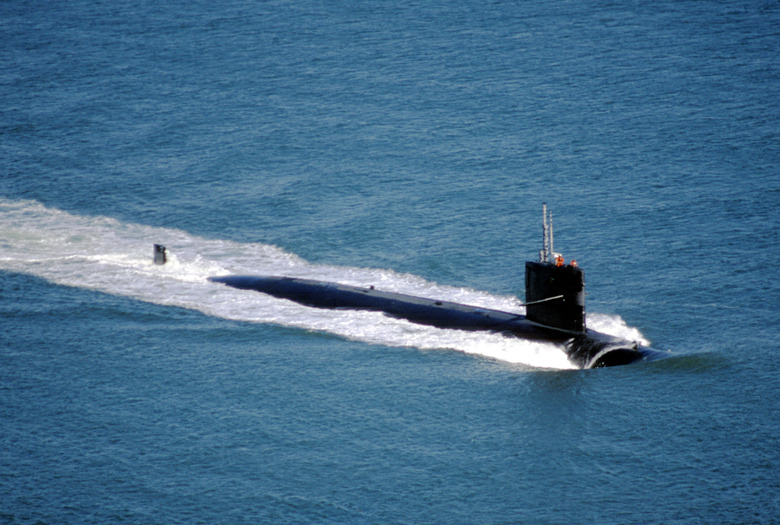How Can The Study Of Density Be Used In The Real World?
Density is a widely used physical property of matter that is technically defined as mass divided by volume. A feather pillow is less dense than a brick of the same size because the volume is the same but the mass of the pillow is much less than that of the brick. You have probably already encountered one of the important practical applications of density, maybe even without knowing.
Ships and Submarines
Ships and Submarines
One well-known application of density is determining whether or not an object will float on water. If the object's density is less than the density of water, it will float; if its density is less than that of water, it will sink. Ships can float because they have ballast tanks that hold air; these tanks provide large volumes of little mass, thus decreasing the density of the ship. Together with the buoyant force that the water exerts on the ship, this reduced density enables the ship to float. In fact, submarines dive below the surface of the water by emptying their ballast tanks.
Oil Spills
Oil Spills
Like ships, oil floats because it is less dense than water, but unlike ships, oil requires no special engineering. Oil is naturally less dense than water, which is why even oil and vinegar salad dressing separates, with the oil floating on the water-based vinegar. Though oil spills are detrimental to the environment, the ability of oil to float aids cleanup.
Plumbing Systems
Plumbing Systems
Fluid flow through a pipe is an important real-world application of density governed by a relation known as Bernoulli's equation. Bernoulli's equation is a special use of the concept of conservation of energy, and the result is that the density of the fluid affects the fluid's velocity, pressure, and even its height. All else being equal, a fluid of greater density will flow through a pipe with a lower pressure, velocity, or height, respectively. Engineers rely on Bernoulli's equation when they design dams and large-scale plumbing projects.
Airplane Weight Distribution
Airplane Weight Distribution
Bernoulli's equation also accounts for the ability of an airplane to fly, though this phenomenon relies primarily on pressure and velocity, not density. However, density plays an additional role in flight. The weight distribution on board the aircraft changes as the engines consume fuel, so the density of the plane is not uniform. This loss of mass results in a shifting center of mass, and pilots must make adjustments during flight to account for these changes.
Cite This Article
MLA
Boley, Allison. "How Can The Study Of Density Be Used In The Real World?" sciencing.com, https://www.sciencing.com/how-can-the-study-of-density-be-used-in-the-real-world-12076093/. 20 June 2018.
APA
Boley, Allison. (2018, June 20). How Can The Study Of Density Be Used In The Real World?. sciencing.com. Retrieved from https://www.sciencing.com/how-can-the-study-of-density-be-used-in-the-real-world-12076093/
Chicago
Boley, Allison. How Can The Study Of Density Be Used In The Real World? last modified March 24, 2022. https://www.sciencing.com/how-can-the-study-of-density-be-used-in-the-real-world-12076093/
